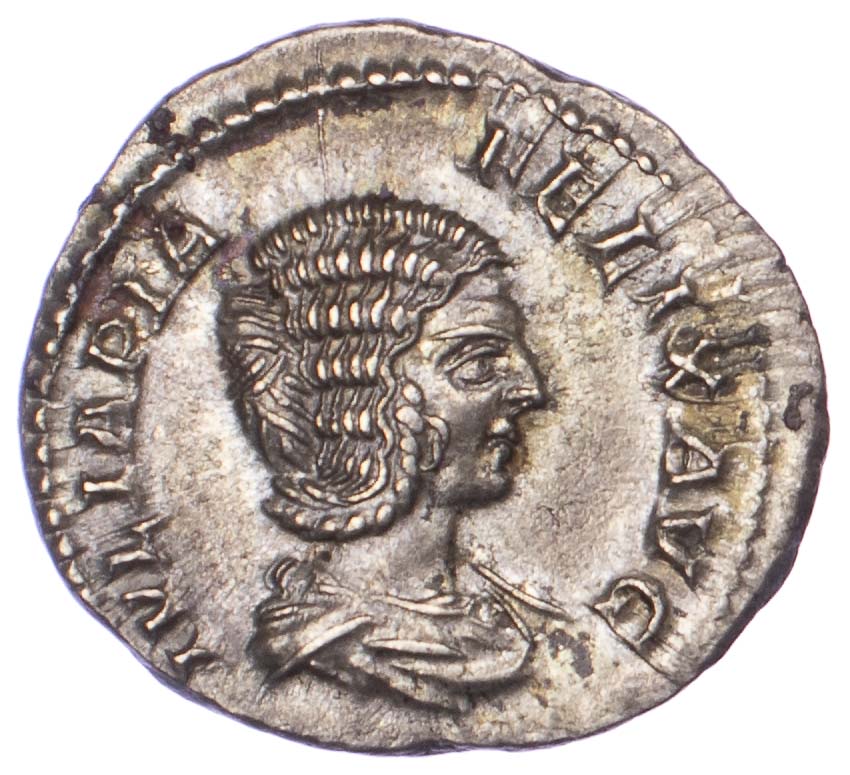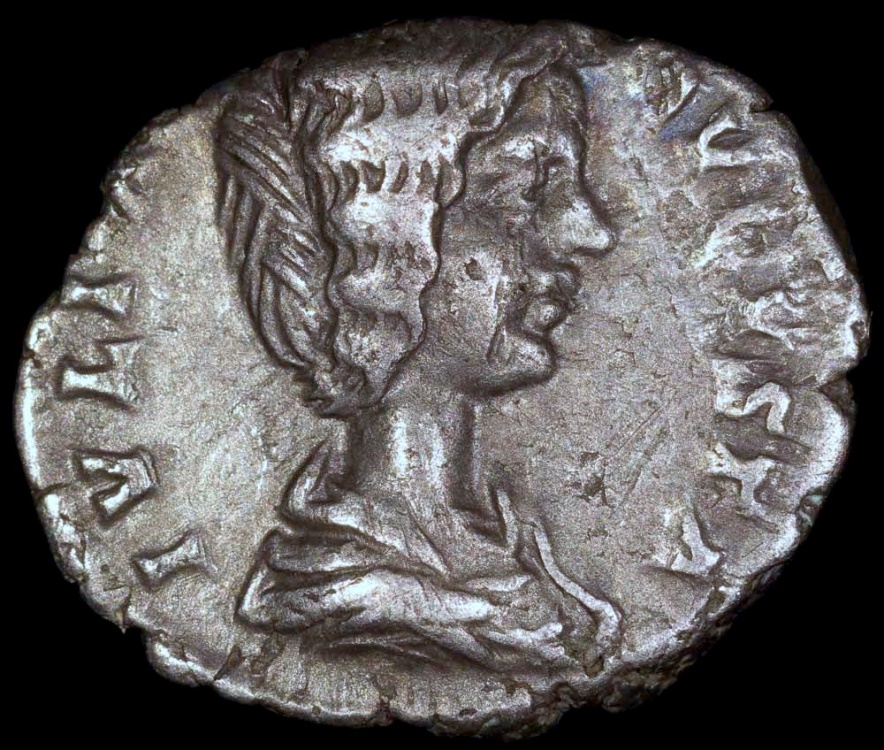
The marriage proved happy, and Severus cherished Domna and her political opinions. Bassianus accepted Severus' marriage proposal in early 187, and in the summer the couple married in Lugdunum (modern-day Lyon, France), of which Severus was the governor. The Augustan History, a generally unreliable source, relates that, after losing his first wife around 186, politician Septimius Severus heard a foretelling of a woman in Syria who would marry a king.

Before her marriage, Domna inherited the estate of her paternal great-uncle Julius Agrippa, a former leading centurion. The family had enormous wealth and was promoted to Roman senatorial aristocracy. ĭomna's ancestors were priest kings of the famous temple of Elagabalus. Through Maesa and her husband Julius Avitus, Domna had two nieces: Julia Soaemias and Julia Mamaea, the respective mothers of future Roman emperors Elagabalus ( r. 218–222) and Severus Alexander ( r. 222–235). She was the youngest daughter of the high priest of Baal, Julius Bassianus, and sister to Julia Maesa. Her name, Domna, is an archaic Arabic word meaning "black", referencing the nature of Elagabal which took the form of a black stone. To an Arab family that was part of the Emesan dynasty.

Julia Domna was born in Emesa (modern day Homs) in Syria around 160 AD This marked the start of the Crisis of the Third Century. The dynasty maintained power until 235, when the reign of Emperor Severus Alexander came to an end. The Severan dynasty was restored to power with the accession of Maesa's grandson, Elagabalus, in 218. After the death of Domna, her older sister Julia Maesa successfully contended for political power. They had a conflictual relationship and Domna acted as their mediator, but Caracalla had his brother Geta assassinated later that year.ĭomna committed suicide in 217 upon hearing of Caracalla's assassination in the course of his campaign against Parthia, on which she had accompanied him to Antioch (present-day Antakya, Turkey). Following the death of Severus in 211, Domna became the first empress dowager to receive the title combination " Pia Felix Augusta", which may have implied greater powers being vested in her than what was usual for a Roman empress mother. After the elder of her sons, Caracalla, started ruling with his father, she was briefly co-empress with Caracalla's wife, Fulvia Plautilla, until the latter fell into disgrace. She received titles such as "Mother of the Invincible Camps". The war ended in 197 with the defeat of the last of Severus's opponents.Īs empress, Domna was famous for her political, social, and philosophical influence. A civil war over the Roman throne broke out in 193, and shortly afterwards Severus declared himself emperor. In 187, she married Severus, who at the time was governor of the Roman province of Gallia Lugdunensis. Domna was born in Emesa (present-day Homs) in Roman Syria to an Arab family of priests of the deity Elagabalus. She was the first empress of the Severan dynasty. 160 – 217 AD) was Roman empress from 193 to 211 as the wife of Emperor Septimius Severus. Our records are frequently revised and enhanced.Julia Domna ( Latin: c. This record has been reviewed by the curatorial staff but may be incomplete. Rev.: Pietas Publica, veiled, standing front, head, l., raising both hands in attitude of prayer to l. Descriptions Description Obv.: Bust, dr., r. To request a higher resolution file of this image, please submit an online request. Sackler Museum, Transfer from Harvard College Library Accession Year 1976 Object Number 1976.40.101 Division Asian and Mediterranean Art Contact The Harvard Art Museums encourage the use of images found on this website for personal, noncommercial use, including educational and scholarly purposes.

165 Acquisition and Rights Credit Line Harvard Art Museums/Arthur M. Title Denarius of Julia Domna Classification Coins Work TypeĬreation Place: Ancient & Byzantine World, Europe, Rome (Latium) Period Roman Imperial period, Middle Culture Roman Persistent Link Physical Descriptions Medium Silver Metal AR Technique Struck Dimensions 2.02 g Die Axis 12 Denomination denarius State, Edition, Standard Reference Number Standard Reference Number BMCR v, no. Identification and Creation Object Number 1976.40.101 People Julia Domna, wife of Septimius Severus, Roman (r.


 0 kommentar(er)
0 kommentar(er)
